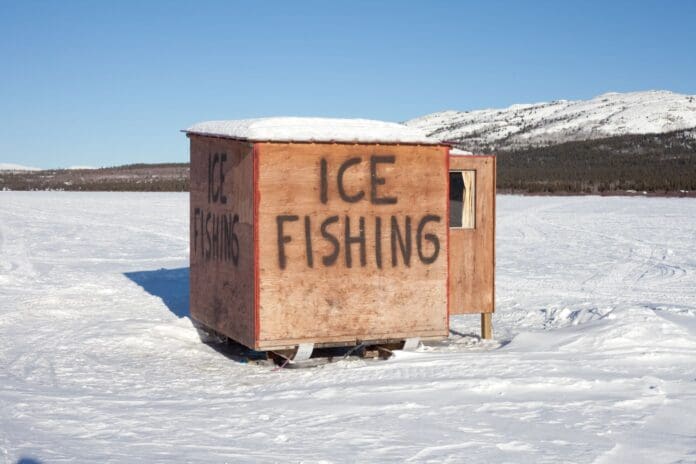Every winter, hundreds of thousands of anglers head for the frozen water to fish. Most ice anglers clean up after themselves, but some don’t — and it’s their behavior that was the impetus for a new litter-on-ice law the Minnesota Legislature passed earlier this year.
Ice conditions so far this season have been highly variable and safety has to be anglers’ top priority. As anglers venture out, the Minnesota Department of Natural Resources reminds them that the new law requires people to secure their trash in a container such as a bucket, garbage bag, or trash bin, and makes clear that depositing sewage — whether from animals or humans — on the ice is prohibited. The latter, particularly as it relates to human waste, has been an increasing problem in recent years, with some owners of deluxe fish houses (also known as wheelhouses) dumping their holding tanks on the ice before heading for shore.
The new law makes it easier for conservation officers and other law enforcement personnel to take enforcement action against people who leave trash and waste on the ice.
“Most anglers leave nothing more than an impression on the ice, and many of them actually take the time to clean up after others because they know trash and waste left on the ice is an eyesore and an environmental and human health concern,” said Col. Rodmen Smith, director of the DNR Enforcement Division. “We certainly appreciate that mindset, but the reality is that we expect all anglers to bring off the ice whatever they brought on. This law will help all of us ensure that happens.”
The new statute reads: “A person using a shelter, a motor vehicle, or any other conveyance on the ice of state waters may not deposit garbage, rubbish, cigarette filters, debris from fireworks, offal, the body of a dead animal, litter, sewage, or any other waste outside the shelter, motor vehicle, or conveyance, unless the material is: Placed in a container that is secured to the shelter, motor vehicle, or conveyance, and not placed directly on the ice or in state waters. For the purposes of this section, ‘sewage’ means excrementitious or other discharge from the bodies of human beings or animals, together with such other water as may be present.”



